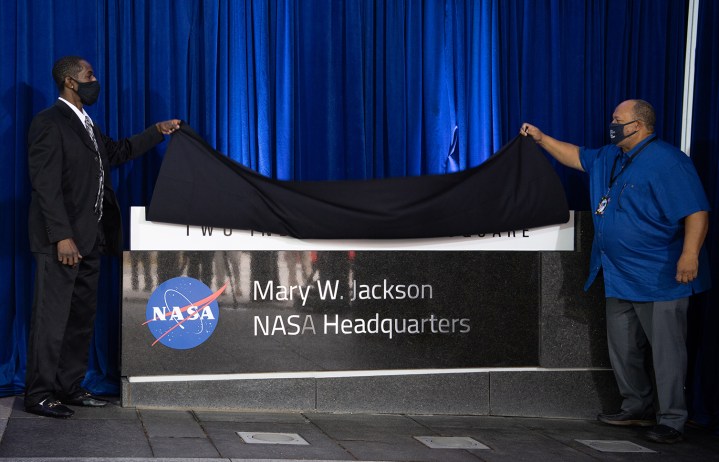
This week, NASA celebrated an iconic figure from its past, Mary Jackson, by renaming its headquarters in her honor.
Jackson was the first Black female engineer at NASA, beginning work there in 1951 when the agency was still segregated. She worked as a “computer,” performing complex mathematical calculations by hand. She then worked as an aerospace engineer, researching airflow and authoring papers on topics such as wind tunnel experiments to improve the design of airplanes. She became a senior engineer before switching career paths to lead equal opportunity programs within the agency to help women and other members of minority groups follow in her path.
She was portrayed in the 2016 book and subsequent movie Hidden Figures, which introduced many people to her and other Black female mathematicians and engineers of her era like Katherine Johnson, Dorothy Vaughan, and Christine Darden. In 2019, she was posthumously awarded the Congressional Gold Medal in recognition of her contributions to mathematics and engineering.
The agency’s headquarters will now be named the Mary W. Jackson NASA Headquarters, and a ceremony to commemorate the re-naming took place on Friday, February 26, at the tail end of Black History Month. Jackson’s grandson and son-in-law attended the event and unveiled the headquarters’ new sign, shown above.
“With the official naming of the Mary W. Jackson NASA Headquarters today, we ensure that she is a hidden figure no longer,” said acting NASA Administrator Steve Jurczyk in a statement. “Jackson’s story is one of incredible determination. She personified NASA’s spirit of persevering against all odds, providing inspiration and advancing science and exploration.”
Clay Turner, director of Langley Research Center where Jackson worked for most of her career, also paid tribute to the influence that she still has on the center and the agency today: “The recognition we celebrate today is appropriate because Mary Jackson remains an inspiration,” he said. ”Her perseverance, her empathy, her desire to lift us all – she inspired others to excel and to break through barriers. That is the spirit of NASA. Mary Jackson chose to lead by example and at NASA today we strive to emulate her vision, passion, and commitment.”
NASA also re-released this image of Jackson and her co-workers at the Langley Research Center taken in 1974. She is second from right in the front row:





